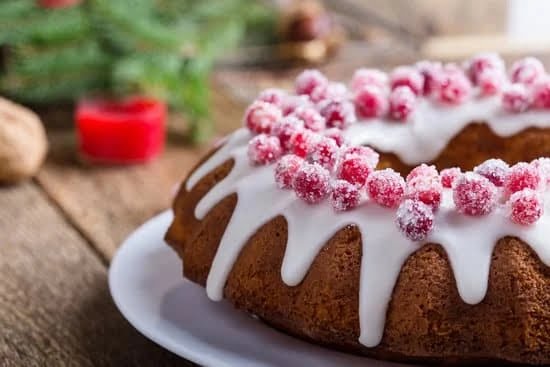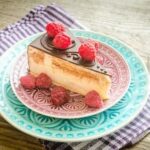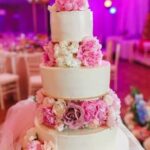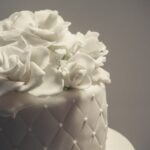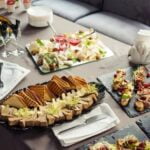Are you looking to elevate your cake decorating skills? Look no further than the art of buttercream cake decorating. From smooth and flawless finishes to intricate piping designs, buttercream offers endless possibilities for creating stunning cakes that are as delicious as they are visually appealing.
Buttercream cake decorating has become increasingly popular in the world of baking and confectionery, admired for its versatility and ease of use. Whether you’re a beginner or an experienced baker, mastering the art of buttercream can take your cake creations to the next level. In this article, we’ll explore everything you need to know about buttercream cake decorating, from the basics of ingredients and tools to advanced techniques and creative design ideas.
We’ll start by delving into the fundamental aspects of buttercream, including the various types and essential ingredients needed for successful cake decorating. Then, we’ll discuss the necessary tools and materials required to achieve professional-looking results. Whether you’re preparing for a special occasion like a wedding or birthday, or simply want to add a touch of elegance to your everyday bakes, mastering buttercream cake decorating is sure to take your creations from ordinary to extraordinary.
The Basics of Buttercream
Buttercream is a classic and versatile frosting that is widely used for cake decorating. It’s made with just a few simple ingredients, yet the variations are endless. Whether you prefer American buttercream, Swiss meringue buttercream, or Italian meringue buttercream, each type has its unique flavor and texture that can elevate your cake decorating to the next level.
When it comes to the basics of buttercream, it all starts with the main ingredients: butter, powdered sugar, and flavorings. Here are some common types of buttercream:
- American Buttercream: Made with butter, powdered sugar, and vanilla extract, this type of buttercream is easy to make and perfect for beginners.
- Swiss Meringue Buttercream: This silky smooth buttercream is made by heating egg whites and sugar over a double boiler and then whipping in softened butter.
- Italian Meringue Buttercream: Similar to Swiss meringue buttercream but with a more stable texture due to the addition of hot sugar syrup into beaten egg whites.
Each type of buttercream has its own unique taste and texture, so it’s important to experiment with different recipes to find the one that suits your preference. Additionally, you can add various flavorings such as cocoa powder, fruit purees, or extracts to create customized flavors for your cakes.
Furthermore, knowing the right consistency of your buttercream is crucial for successful cake decorating. The stiffness of the frosting can affect how well it holds up when piped onto cakes or smoothed onto surfaces.
Understanding the different types of glucose syrup or corn syrup to use can help achieve the desired consistency for specific decoration techniques such as piping flowers or creating intricate designs on cakes. Mastering these basics will set you on your way to becoming a skilled in buttercream cake decorating.
Tools and Materials Needed for Buttercream Cake Decorating
When it comes to buttercream cake decorating, having the right tools and materials is essential for creating beautiful and professional-looking designs. Some basic tools you will need include an offset spatula for smoothing the buttercream, a piping bag and various tips for creating different designs, a turntable for easy icing application, and a bench scraper for achieving smooth finishes.
In addition to these basic tools, there are also some specific materials that are commonly used in buttercream cake decorating. These include different types of food coloring gels or powders to achieve vibrant colors, edible sprinkles or decorations for adding extra flair to the design, and stencils for creating intricate patterns.
It’s important to invest in high-quality tools and materials when it comes to buttercream cake decorating. This can make a significant difference in the outcome of your designs, as well as making the decorating process easier and more enjoyable.
| Basic Tools | Materials |
|---|---|
| Offset spatula | Food coloring gels or powders |
| Piping bags and tips | Edible sprinkles or decorations |
| Turntable | Stencils |
| Bench scraper |
Investing in good quality tools is worth what you pay. Not only will they last longer but they can also make your experience much better. As with anything else think about the cost vs. value of these items – cheaper frosting bags might save you money in the short term but they’re prone to splitting which could be disastrous if you’re working on a cake at that crucial final stage.
Techniques for Applying Buttercream to Cakes
When it comes to applying buttercream to cakes, there are several techniques that can be used to achieve different textures and finishes. One of the most common methods is the “crumb coat,” which involves applying a thin layer of buttercream to the cake before adding a final layer. This helps to seal in any crumbs and create a smooth surface for the final coat of frosting.
Another popular technique is the “spatula method,” which involves using an offset spatula to spread buttercream onto the cake in even layers. This technique allows for more control over the thickness of the frosting and can help create sharp edges and smooth surfaces.
For those looking to add texture and dimension to their cakes, the “swirled” or “textured” buttercream techniques can be used. These involve using different tools, such as combs or cake scrapers, to create swirling patterns or textured finishes in the buttercream.
It’s important to note that regardless of the technique used, it’s crucial to work with chilled cakes and properly whipped buttercream to achieve the best results. Additionally, practicing these techniques on a flat surface before applying them to a cake can help refine your skills and ensure a professional-looking finish.
| Technique | Description |
|---|---|
| Crumb Coat | Thin layer of buttercream applied before final coat |
| Spatula Method | Using an offset spatula for even layers and smooth surfaces |
| Swirled/Textured | Creating patterns or textured finishes with combs or scrapers |
Tips for Achieving Smooth and Flawless Buttercream Finishes
When it comes to buttercream cake decorating, achieving a smooth and flawless finish is essential for creating professional-looking cakes. Whether you’re a beginner or an experienced baker, mastering the art of smoothing out buttercream can take some practice. However, with the right techniques and tips, you can easily achieve perfect results every time.
Chilling the Cake
One of the key tips for achieving a smooth buttercream finish is to chill your cake before applying the final layer of frosting. This helps to firm up the crumb coat and prevents crumbs from mixing into the final layer of buttercream. After applying the crumb coat, place the cake in the refrigerator for at least 30 minutes to allow it to set before adding the final layer of frosting.
Using a Bench Scraper or Offset Spatula
To achieve a smooth buttercream finish, using a bench scraper or offset spatula is essential. Once you have applied the final layer of buttercream, use a bench scraper held perpendicular to the cake’s surface to smooth out the sides. For the top of the cake, use an offset spatula to create an even and level surface.
Viva Paper Towel Method
Another popular technique for achieving a flawlessly smooth buttercream finish is known as the Viva paper towel method. Simply apply your final layer of buttercream and then gently smooth out any imperfections using a Viva brand paper towel. The paper towel will help create a polished look without leaving behind any unwanted textures.
By following these tips and techniques, you can easily achieve smooth and flawless buttercream finishes on your cakes, ensuring that they look as impressive as they taste. Whether you’re decorating a simple birthday cake or an elaborate wedding cake, mastering this skill will take your buttercream cake decorating to the next level.
Buttercream Piping and Decorating Ideas
When it comes to buttercream cake decorating, piping is a crucial aspect that allows for creativity and personalization. There are various piping techniques that can be used to create beautiful designs and decorations on cakes. One popular technique is the rosette design, which involves piping swirls of buttercream in a circular motion to create a flower-like pattern. Another common technique is the basketweave, which gives the appearance of woven strips of buttercream around the cake.
In addition to traditional piping tips, decorators can also use specialty tips to create unique designs such as ruffles, leaves, or lace patterns. These tips can add texture and depth to the cake’s design, elevating the overall aesthetic appeal. Furthermore, decorators can experiment with different colors of buttercream to achieve ombre effects or multi-colored designs.
For those looking to take their buttercream cake decorating skills to the next level, incorporating edible decorations such as fondant flowers, chocolate drizzles, or edible glitter can add even more visual interest and sophistication to the finished product. By combining different piping techniques with these added elements, decorators have the opportunity to bring their creative visions to life and produce stunning works of edible art that are sure to impress any audience.
Troubleshooting Common Buttercream Cake Decorating Issues
When it comes to buttercream cake decorating, there are a few common issues that can arise. Here are some troubleshooting tips to help you overcome these challenges:
1. Crumbly Buttercream: If your buttercream is too crumbly, it may be due to not adding enough liquid or over-mixing the frosting. To fix this issue, try adding a small amount of milk or cream to the mixture and gently stirring until it reaches the desired consistency.
2. Air Bubbles in Piping: Air bubbles can cause uneven piping and ruin the overall look of your cake. To prevent this issue, make sure to properly mix and smooth out your buttercream before filling your piping bag with frosting. You can also gently tap the filled piping bag on a hard surface to release any trapped air bubbles.
3. Melting or Sliding Decorations: In warm temperatures, buttercream decorations can melt or slide off the cake. To avoid this issue, keep your decorated cake in a cool environment before serving, especially if it’s an outdoor event. Additionally, consider using less delicate decorations or using fondant for intricate designs in hot weather.
Remember that practice makes perfect when it comes to buttercream cake decorating. Don’t be discouraged by these common issues; instead, use them as learning experiences to improve your skills and create beautiful cakes that everyone will love.
Creative Ideas for Buttercream Cake Designs and Themes
When it comes to buttercream cake decorating, the possibilities are endless. There are countless creative ideas and themes that you can explore to make your cakes truly standout. Whether you’re a beginner or an experienced baker, experimenting with different designs and themes can be both fun and rewarding.
Seasonal and Holiday Themes
One of the easiest ways to showcase your creativity with buttercream cake decorating is by incorporating seasonal or holiday themes into your designs. For example, you can create a spring-themed cake with pastel-colored flowers and butterflies using buttercream. Or, for Halloween, you can make a spooky graveyard cake complete with tombstones and eerie trees. The key is to use vibrant colors and creative piping techniques to bring these themes to life.
Character Cakes
Another popular idea for buttercream cake designs is creating character cakes. Whether it’s a favorite cartoon character, superhero, or even a beloved animal, using buttercream to bring these characters to life on a cake can be a hit at any party. With the right piping tips and some practice, you can create detailed and lifelike characters on your cakes that will impress both kids and adults alike.
Geometric Patterns and Abstract Designs
For a more modern and artistic approach to buttercream cake decorating, consider experimenting with geometric patterns and abstract designs. Use different shades of buttercream to create bold geometric shapes or opt for a watercolor effect with blended colors. These contemporary designs can add a unique touch to your cakes and showcase your artistic skills.
By exploring these creative ideas for buttercream cake designs and themes, you can elevate your decorating skills and produce stunning works of edible art that will leave a lasting impression on everyone who sees them. Whether it’s for personal enjoyment or professional purposes, the joy of creating beautiful buttercream cakes knows no bounds.
Buttercream Cake Decorating for Special Occasions Such as Weddings or Birthdays
In conclusion, buttercream cake decorating is a versatile and popular way to add beauty and flavor to all types of cakes, especially for special occasions such as weddings or birthdays. With the right ingredients, tools, and techniques, anyone can create stunning and delicious buttercream cakes that will impress friends and family alike.
One of the key factors in successful buttercream cake decorating for special events is careful planning and attention to detail. By selecting the right flavors, colors, and designs, you can customize your cakes to perfectly match the theme or style of the occasion. Whether it’s elegant floral piping for a wedding cake or a fun and vibrant design for a birthday celebration, buttercream offers endless possibilities for creativity.
Additionally, with some troubleshooting knowledge on how to overcome common buttercream cake decorating issues, such as air bubbles or color bleeding, you can ensure a smooth process from start to finish. By incorporating unique ideas and themes into your designs, you can create memorable experiences through visually stunning and delicious buttercream cakes that will be the highlight of any special occasion.
So don’t be afraid to experiment with new techniques and flavors in your buttercream cake decorating – the results are sure to be both beautiful and delectable.
Frequently Asked Questions
How Do You Decorate a Cake With Buttercream for Beginners?
Decorating a cake with buttercream for beginners involves starting with a crumb coat to seal in the crumbs before adding a thicker layer of buttercream. Using a turntable and offset spatula can help create smooth, even layers of frosting. Piping bags and tips can be used to create decorative designs as well.
What Is the Best Type of Buttercream Frosting for Decorating Cakes?
The best type of buttercream frosting for decorating cakes is often Swiss meringue buttercream. This type of buttercream is silky, stable, and pipes beautifully, making it ideal for creating intricate designs on cakes. Its smooth texture allows for easy application and manipulation while decorating.
What Is the Best Smooth Buttercream for Cake Decorating?
The best smooth buttercream for cake decorating is Italian meringue buttercream. It has a glossy finish and a luxurious, velvety texture that makes it perfect for achieving a flawlessly smooth surface on cakes. Its stability also makes it easier to work with when creating intricate decorations or designs on cakes.

Welcome to our cake decorating blog! My name is Destiny Flores, and I am the proud owner of a cake decorating business named Cake Karma. Our mission is to provide delicious, beautiful cakes for all occasions. We specialize in creating custom cakes that are tailored specifically to each customer’s individual needs and tastes.

